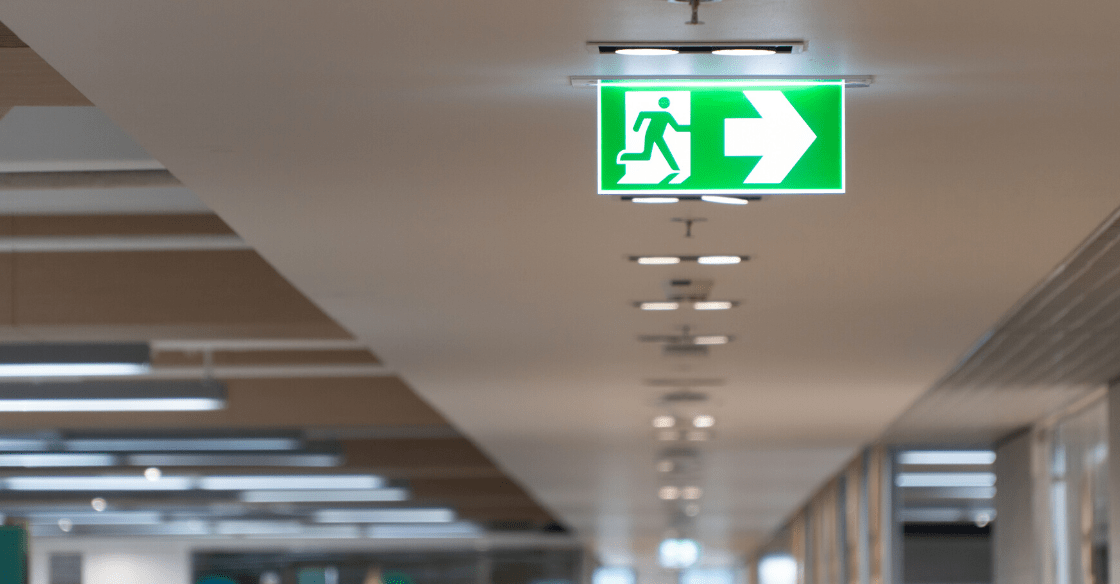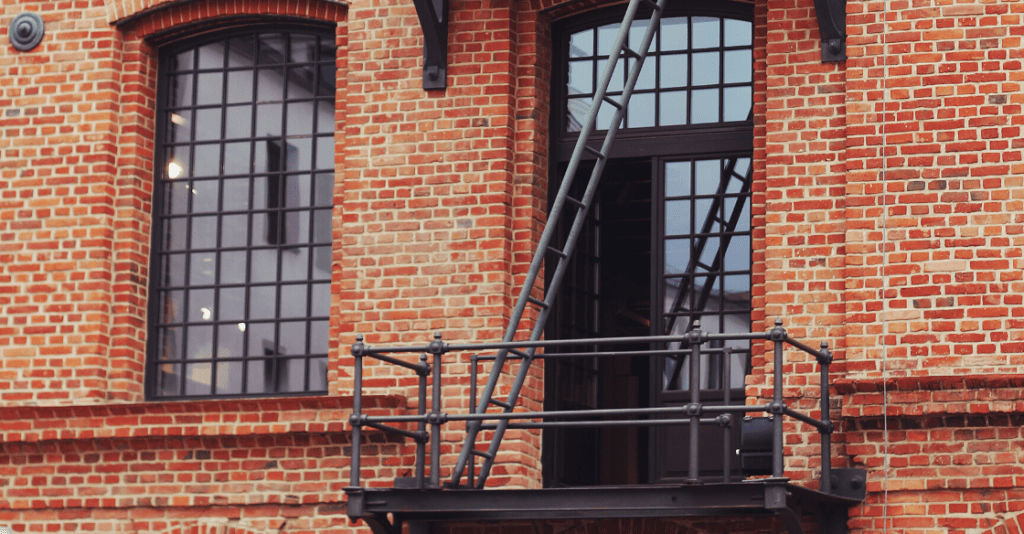We have all sat at home, and the lights go out. We scramble in the dark to find our candles and flashlights so we can function. At the very least, we turn the flashlight on from our phones to help us navigate our home and not trip over each other, our furniture, our pets, or those wonderful toys are strewn across the floor.
At home, we only need to navigate around our family or a small group of people. We know the layout of our home and know the people. In a commercial building, we are not as lucky. An Industrial emergency lighting system helps people navigate their way to safety. Unlike home, you are in unfamiliar territory. Even if you work in the location, there are people you do not know and other buildings you may not know how to navigate.
What Are Industrial Emergency Lights?
Industrial emergency lights are the lighting system that comes on when the lights go out, or the fire system is activated. This system includes the illuminated EXIT sign as well as the emergency lighting systems lining the hallway of the facility.
Emergency lighting is part of a regulated fire safety system. Along with emergency fire sprinklers and alarms, the emergency and exit lights help people escape the fire as well as aid firefighters when entering the building to save people and put out the fire. The lights will come on when the fire alarm is triggered and provide plenty of illumination to help see through not only the dark but smoke and fire.
What Are the Laws Involving Industrial Emergency Lights?
California code requires what is known as “Emergency Illumination.” This regulation directly relates to the features included in an industrial building’s emergency response system. Private homes are not required to have this because they are private dwellings. However, commercial properties are required by law to have some type of industrial emergency lights.
The regulation mandates many, but not all, requirements of the lighting system. For instance, the system may include emergency lighting that only comes on when an emergency occurs. This type of lighting is called “non-maintained lighting.” The other kind of lighting is called maintained lighting. It is on all the time.
The law makes two crucial requirements:
- All exit signs, egress lighting, and other lighting must be provided to make sure the walkways are well-lit in an emergency
- The lights must be installed to make sure that even if one bulb goes out, the space is still well-lit.

The NFPA includes the life safety code, which states:
- The lights must include a monthly inspection to be compliant with the law.
- There must be an annual test of the emergency and exit lighting systems
Finally, OSHA’s code of regulations requires:
- Adequate and reliable lighting for all exits
- Proper maintenance such that exit lighting is always in the best possible working condition.
In order to be compliant with California regulations, you must follow these codes. They help ensure all industrial emergency lighting is doing its job to help protect people in a commercial building at all times.
What Benefit Does Emergency Lighting Provide?
Aside from the legal necessity for emergency lighting, there are many benefits for your business and its clientele. Emergency lighting and EXIT lighting help:
- Direct individuals to viable exits
- Keep employees safe during a power outage
- Keep areas lit during a fire or other emergency situation
- Help firefighters and police navigate the building in the event of an emergency
- The illumination that can be seen through smoke, fire, and water
- May help lower insurance premiums
- Keeps areas lit during hours the building is closed, which can deter amateur criminals
- Uses LED technology to keep costs down while on
What Is the Installation Process for Industrial Emergency Lighting?
Industrial emergency lighting is part of the fire control system that is required by law. Therefore, this type of emergency lighting cannot be completed by a standard electrician or business owner. A licensed contractor must install the entire system. This contractor should already offer fire protection services and understand the process of installing the sprinkler system and emergency lights that are not part of the standard circuit breaker.
Additionally, they need to be able to work off a limited generator. When the power is out, whether because of a regular power outage or an emergency, the lighting system must still work. This installation is done through a specialized installation process that ensures the system will work when there is no other power throughout the building.

How is an Emergency Lighting System Maintained?
As with any electrical system, an industrial emergency lighting system can have issues. Lights can blow out. The sound can stop working. The system can stop responding when the power is out, etc., these issues are typical. However, when they occur with your emergency lighting system, they can be detrimental.
Because of these types of issues, you must inspect your system once a month. An inspection will be able to make sure the system is working, and the bulbs are in working condition. However, an inspection may not catch the occasional issue that may occur.
Therefore, the company that installs your system must maintain your system at a moment’s notice. It is never recommended that you repair your emergency lighting system on your own. You should not even replace a bulb. Instead, call your provider. Their licensed technicians will know how to repair your system, replace a light bulb, and otherwise maintain your system as needed, even between inspections.
Conclusion
The law requires commercial businesses to have industrial emergency lighting. The lighting helps protect the business from amateur intruders. It also helps protect clients and employees in the event of an emergency, lighting the way out of the building and towards safety. Finally, the system helps protect the emergency personnel coming into the building to save those in need. An adequately installed emergency lighting system will allow emergency personnel to see through dense smoke and water, keeping them safe and aware of the exits at all times. These lighting systems can be the difference between life and death in an emergency situation.
To learn more about industrial emergency lighting, contact the experts APFE Corp at 866-238-3404. Our licensed professionals will be happy to answer any questions you have.




